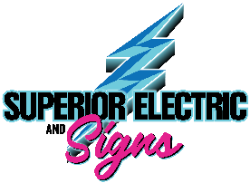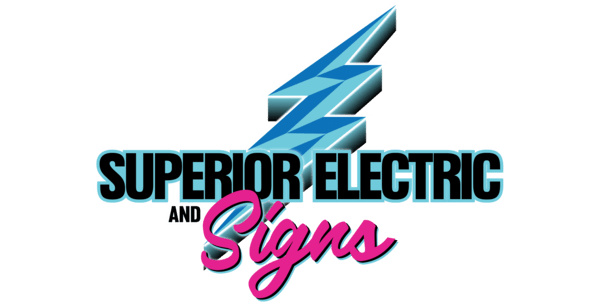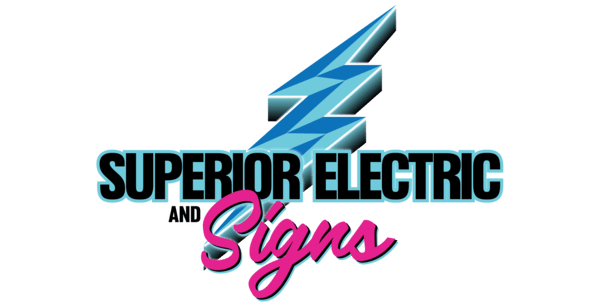Services
Professional Services That Will Meet And Exceed Expectations
Commercial
By outsourcing these services to professionals, businesses can focus on their core operations and leave the maintenance and upkeep of their property to experts. Commercial services providers typically have specialized skills, equipment, and training to ensure that they provide high-quality services that meet the unique needs of each business.
Residential
Residential services are essential for maintaining the safety, comfort, and functionality of a home. By outsourcing these services to professionals, homeowners can ensure that their property is well-maintained and safe for themselves and their families.
Troubleshooting
Troubleshooting services typically involve a trained professional who uses diagnostic tools and techniques to identify the root cause of the problem and develop a solution to resolve it. Troubleshooting services are essential for maintaining the safety, efficiency, and functionality of various systems and equipment.
Our Warranty
for all of our services
Our 30 day warranty period provides customers with peace of mind, knowing that they can rely on the quality of the service provided. It also demonstrates that the company is confident in the work that they do and are willing to stand behind it.
Generator Hookup
Generator hookup refers to the process of connecting a generator to an electrical system to provide backup power during an outage or other emergencies. Generators can be hooked up to a variety of systems, including residential, commercial, and industrial systems. The hookup process involves several steps, including selecting the appropriate type of generator, installing the necessary equipment, and performing regular maintenance.
Types Of generators
There are several types of generators available on the market, including portable, standby, and whole-house generators. Portable generators are small and can be easily moved from one location to another. They are typically used to power small appliances or tools during a power outage. Standby generators are permanently installed outside the home or building and are designed to provide backup power automatically during an outage. Whole-house generators are similar to standby generators, but they are designed to power the entire home or building.
Installation
The installation of a generator hookup involves several steps. The first step is to select the appropriate type of generator based on the power requirements of the electrical system. The generator must be installed in a safe and secure location, away from any potential hazards. A transfer switch is then installed to connect the generator to the electrical system. This switch is designed to prevent backfeeding, which can be dangerous to the electrical system and people in the vicinity.
Regulator Maintenance
Regular maintenance is crucial to ensure the proper operation of a generator hookup. This includes regular inspections, oil changes, and filter replacements. The battery should also be checked regularly, and any corroded connections should be cleaned. It is important to test the generator regularly to ensure that it is functioning properly and to identify any potential problems before they become serious.
Pool Wiring
Pool wiring refers to the electrical system that powers a swimming pool, including the pool pump, filter, lighting, and other electrical components. Proper pool wiring is crucial for safety and efficiency, as well as compliance with local electrical codes.
Types Of Pool Wiring
There are two main types of pool wiring: underground and above-ground. Underground wiring is typically used for permanent in-ground pools, where the wiring is buried underground and run to a sub-panel or disconnect switch located near the pool equipment. Above-ground wiring is used for above-ground pools, where the wiring is run above ground and attached to the exterior of the pool.
Installation
The installation of pool wiring involves several steps. The first step is to obtain any necessary permits and comply with local electrical codes. A licensed electrician should be hired to install the wiring and ensure that it is done correctly. The wiring should be installed in a conduit or raceway, which protects the wires from damage and provides easy access for maintenance. Ground-fault circuit interrupters (GFCIs) should also be installed to protect against electrical shock.
Regular Maintenance
Regular maintenance is important to ensure that the pool wiring is functioning properly and safely. This includes checking the wiring and conduit for damage or wear, checking GFCIs for proper operation, and performing routine inspections of the pool equipment. The pool pump should be cleaned and maintained regularly to prevent damage to the wiring and electrical components. It is also important to have the wiring inspected by a licensed electrician periodically to ensure that it is in compliance with current electrical codes.
Boat Dock
A boat dock is a structure that is built along the shore of a body of water to provide a secure location for boats to dock. A properly designed and installed boat dock can provide a safe and stable platform for boating activities, as well as increase the value and enjoyment of waterfront property.
Types Of Boat Docks
There are several types of boat docks, including floating docks, fixed docks, and combination docks. Floating docks are typically constructed of modular sections that are connected and anchored to the shore. They are designed to rise and fall with changes in water level and are suitable for locations with fluctuating water levels. Fixed docks are constructed on pilings or posts and are suitable for locations with stable water levels. Combination docks are a hybrid of floating and fixed docks and are suitable for locations with varying water levels.
Installation
The installation of a boat dock involves several steps. The first step is to obtain any necessary permits and comply with local zoning and environmental regulations. The dock should be designed to withstand the local weather conditions and water currents. The dock should be installed on a level and stable foundation, such as pilings or posts. The decking should be made of a durable and slip-resistant material, such as pressure-treated wood or composite decking.
Maintenance
Regular maintenance is important to ensure that the boat dock is safe and functional. This includes inspecting the dock for damage or wear, cleaning the decking, and checking the anchoring system. Any damaged or worn components should be repaired or replaced as needed. The dock should be inspected after any major weather events, such as storms or hurricanes, to ensure that it is still securely anchored and safe to use.
Home Lighting
Home lighting is an essential aspect of home design and functionality. Proper lighting can enhance the mood and atmosphere of a room, increase safety and security, and highlight architectural features and decor.
Types Of Home Lighting
There are several types of home lighting, including ambient lighting, task lighting, accent lighting, and decorative lighting. Ambient lighting is the general lighting that provides overall illumination in a room, such as ceiling fixtures or wall sconces. Task lighting is focused lighting that is designed for specific tasks, such as reading or cooking, and includes table lamps, floor lamps, and under-cabinet lighting. Accent lighting is used to highlight specific features, such as artwork or architectural details, and includes track lighting, recessed lighting, and picture lights. Decorative lighting is used for aesthetic purposes and includes chandeliers, pendant lights, and decorative wall sconces.
Installation
The installation of home lighting involves several steps. The first step is to determine the lighting needs and design a lighting plan that includes the types of lighting fixtures and their placement. The wiring and electrical work should be done by a licensed electrician, and the fixtures should be installed according to manufacturer instructions. The installation should comply with local electrical codes and safety standards. For more complex installations, such as recessed lighting or track lighting, it may be necessary to hire a professional lighting installer.
Maintenance
Regular maintenance is important to ensure that home lighting is functional and safe. This includes checking the wiring and fixtures for damage or wear, cleaning the fixtures, and replacing bulbs as needed. Outdoor lighting should be checked after major weather events to ensure that it is still secure and functioning properly. It is also important to have the electrical system inspected periodically by a licensed electrician to ensure that it is in compliance with current electrical codes and safety standards.
Inspection Report Punchlist
An inspection report punchlist is a checklist of items that need to be addressed or corrected after a property inspection. It is typically created by a home inspector, contractor, or property manager, and provides a detailed report of any issues or deficiencies found during the inspection process.
Types
There are several types of inspection report punchlists, including home inspection punchlists, commercial property inspection punchlists, and rental property inspection punchlists. Home inspection punchlists are used to document issues found during a residential property inspection, such as plumbing or electrical issues, roof leaks, or structural defects. Commercial property inspection punchlists are used to document issues found during a commercial property inspection, such as HVAC or lighting issues, building code violations, or safety hazards. Rental property inspection punchlists are used to document issues found during a rental property inspection, such as damage caused by tenants, lease violations, or maintenance issues.
Process
The installation process for an inspection report punchlist involves several steps. The first step is to conduct a thorough inspection of the property, either by a home inspector, contractor, or property manager. The findings should be documented on a punchlist, which includes a description of the issue, the location of the issue, and any recommended repairs or corrective actions. The punchlist should be shared with the property owner or manager, who is responsible for addressing and correcting the issues listed on the punchlist.
Maintenance
Regular maintenance is important to ensure that the property remains in good condition and to prevent future issues. This includes addressing the items listed on the inspection report punchlist, as well as conducting routine maintenance tasks, such as cleaning gutters, changing air filters, and inspecting and repairing any damage to the property. It is important to address any issues promptly to prevent them from becoming more serious and costly to repair.
Troubleshooting
Electrical troubleshooting is the process of diagnosing and correcting electrical problems in a system or device. It involves identifying the root cause of a problem and implementing a solution to fix it.
Types
There are several types of electrical troubleshooting, including residential electrical troubleshooting, commercial electrical troubleshooting, and industrial electrical troubleshooting. Residential electrical troubleshooting involves identifying and fixing issues in electrical systems in homes, such as faulty wiring, circuit breaker problems, or malfunctioning outlets. Commercial electrical troubleshooting involves diagnosing and correcting electrical problems in commercial buildings, such as office complexes, retail stores, and restaurants. Industrial electrical troubleshooting involves identifying and correcting electrical problems in manufacturing plants, refineries, and other industrial settings.
Installation
The installation process for electrical troubleshooting involves several steps. The first step is to identify the problem by gathering information and conducting tests. This may involve using electrical testing equipment to measure voltage, current, or resistance, or visually inspecting wiring and components. Once the problem is identified, the next step is to develop a plan to fix it. This may involve repairing or replacing components, rewiring circuits, or updating electrical systems. The final step is to test the system to ensure that the problem has been fixed and that the system is functioning properly.
Maintenance
Regular maintenance is important to prevent electrical problems and ensure that electrical systems are functioning safely and efficiently. This includes regular inspections of wiring, components, and systems, as well as cleaning and replacing components as needed. It is also important to conduct routine tests to measure voltage, current, and resistance to identify any potential issues before they become more serious. It is important to hire a licensed electrician for any electrical installations, repairs, or maintenance to ensure compliance with local codes and safety standards.
Commercial Signs
Commercial signs are an important part of any business, as they help to advertise and promote a company’s brand and products or services.
Types
There are several types of commercial signs, including storefront signs, pole signs, monument signs, channel letter signs, and digital signs. Storefront signs are typically attached to the front of a business and include signs such as window graphics, awnings, and fascia signs. Pole signs are freestanding signs that are often used to attract attention from a distance. Monument signs are permanent structures that are typically made of stone or brick and are designed to blend in with the surrounding architecture. Channel letter signs are three-dimensional signs made of metal or plastic and are often used for branding purposes. Digital signs are electronic signs that can display a variety of messages and graphics.
Installation
The installation process for commercial signs varies depending on the type of sign and the location. It is important to hire a professional sign company for the installation to ensure that the sign is installed safely and properly. The installation process typically involves site surveys to determine the best location for the sign, obtaining permits and approvals from local authorities, and installing the sign using specialized equipment and techniques. The installation process should be completed in compliance with local codes and safety standards.
Maintenance
Regular maintenance is important to ensure that commercial signs remain in good condition and continue to effectively promote the business. This includes cleaning the sign to remove dirt and debris, inspecting the sign for damage or wear, and repairing or replacing components as needed. It is important to address any issues promptly to prevent them from becoming more serious and costly to repair. It is also important to update the sign as needed to reflect changes in the business, such as new products or services.
Commercial Lighting
Commercial lighting is an essential aspect of any business, providing illumination for workspaces, products, and customers.
Types
There are several types of commercial lighting, including ambient lighting, task lighting, accent lighting, and emergency lighting. Ambient lighting provides general illumination throughout a space and is typically provided by overhead fixtures. Task lighting is focused lighting that is designed to provide illumination for specific tasks, such as reading or working on a computer. Accent lighting is used to highlight specific areas or products, such as display cases or artwork. Emergency lighting is designed to provide illumination in the event of a power outage or other emergency.
Installation
The installation process for commercial lighting involves several steps. The first step is to develop a lighting plan that identifies the types of lighting needed and the best locations for fixtures. This may involve working with a lighting designer or an electrical contractor. The next step is to install the fixtures and wiring, which may require working with other contractors or trades, such as carpenters or drywall installers. The installation process should comply with local codes and safety standards, and it is important to hire a licensed electrician for any electrical work.
Maintenance
Regular maintenance is important to ensure that commercial lighting remains in good condition and continues to provide effective illumination. This includes cleaning fixtures and lenses to remove dirt and debris, inspecting wiring and components for damage or wear, and replacing bulbs or fixtures as needed. It is important to address any issues promptly to prevent them from becoming more serious and costly to repair. It is also important to update the lighting as needed to reflect changes in the business, such as new products or services.
you asked we answer
What is your service area?
We provide service to businesses all throughout Southwest Florida.
How many years of experience do you have?
We have over 50 years of combined experience.
What services do you offer?
We provide service for commercial signs and lighting. We also provide services including generator hook ups, pool wiring, boat docks, home lighting and we provide inspection report punchlist and troubleshooting.
Are you licensed and Insured?
Our License Number: EC13012068
Yes, we are fully insured!
How does a new sign process work?
We will come up with a design if you haven’t already. Figure out the best way to construct it to you specific price range. File a permit to make sure the local municipalities will approve said sign and get it into production.
What happens if the project goes over budget?
There will be a LOT of communication before that would ever happen. Transparency is incredibly important and we understand that.
How long does it take to get an estimate?
Depending on the scope of the project, most cases same day.
Will I be able to request changes during the project?
Absolutely! We know how important it is especially the price you spend on any project. Priority is getting it right.
License Number: EC13012068
Company
Contact
Ft. Myer 33976
Tel: (239) 933-7444
info@superiorelectricas.com
Monday-Friday: 8:00am-6:00pm
© 2023 Superior Electric and Signs LLC All Rights Reserved.



